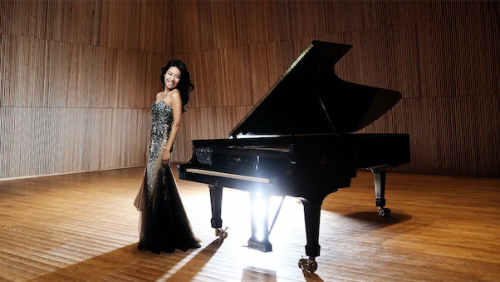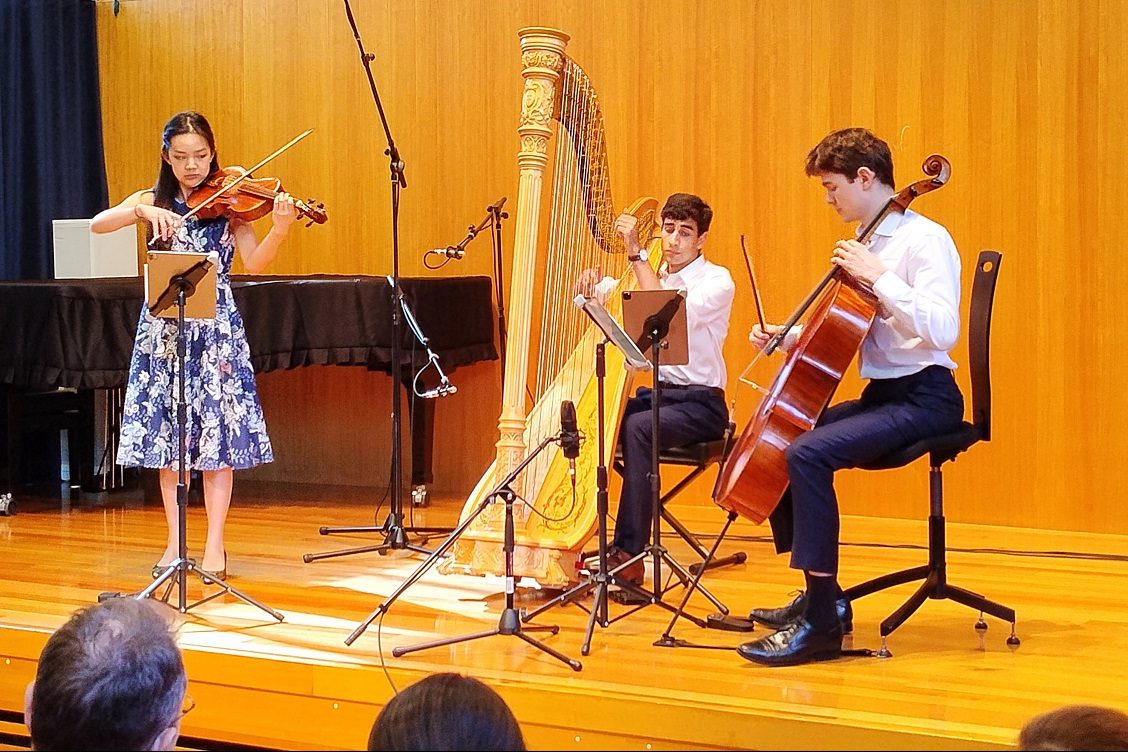
This was perhaps the most incredible piano recital I have ever had the pleasure of attending.
The 32-year-old Joyce Yang was astonishingly brilliant, giving a performance that called on every nuance imaginable from 88 keys. She was able to draw ear-bending power from her instrument without it being forced. She was able to coax out the softest, most delicate sounds with the gentlest of touch. Everything in between was given the most expressive, sensitive treatment, with her entire body immersed in the music.
Whether it was one of the three Rachmaninoff preludes or Liszt’s “Spanish Rhapsody”, Joyce Yang had her audience spellbound, punctuated only by a coughing chorus from some, interrupting the relationship between artist and audience, and getting so bad it nearly ruined Janá?ek’s “Piano Sonata 1.X.1905”, a work whose surviving two movements, “Foreboding” and “Death” we are very lucky to have today. Janá?ek had tossed them in the river after the premiere, but thankfully the artist had copied them, returning them to their grateful composer 18 years later. Janá?ek had already thrown the third on the fire.
On its world premiere tour, the 2018 piano sonata by 24-year-old Australian composer Elizabeth Younan was a tour-de-force. She marked its three movements as moderate, slow, and fast. But the outer movements could equally be marked furioso, such is their intensity and pace. Yang says it is a “dangerous work”, in which each movement is one of “darkness turning into light, with atonality searching for tonality but finding polytonality.”
Yang’s playing of Younan’s piece was flawless. There was sit-up-and-take-notice intensity in the driving rhythms of the outer movements, and marvellously smooth, floating motion in the chromatics of the middle movement. The third reminded me of Leonard Bernstein’s rhythms and stylings; he would have been impressed. Indeed, this work surely will find it way into the general recital repertoire.
Closing the recital was Liszt’s monumental 35-minute, single movement B-minor sonata. This work drew everything together from the rest of the recital – intensity, fluidity, extremes in dynamics, myriad tempi, and incomparable virtuosity. It was another performance of remarkable passion, including a lengthy, hanging silence (in which my prayer for no coughing was answered, indeed no-one dared even to breathe). Dylan Henderson, in his program notes for this piece, says: “Liszt keeps us guessing, leaving us fumbling in the dark as we try to unwrap the enigma of its raison d’être.”
A standing ovation was this extraordinary artist’s reward for a remarkable recital, to which she graciously responded with an encore she called “the after-life for this program”: the Nocturne from Grieg’s “Lyric Pieces, Book V”. It was a quiet, reflective conclusion to a very special evening of supreme music-making.
Who can be trusted?
In a world of spin and confusion, there’s never been a more important time to support independent journalism in Canberra.
If you trust our work online and want to enforce the power of independent voices, I invite you to make a small contribution.
Every dollar of support is invested back into our journalism to help keep citynews.com.au strong and free.
Thank you,
Ian Meikle, editor




Leave a Reply